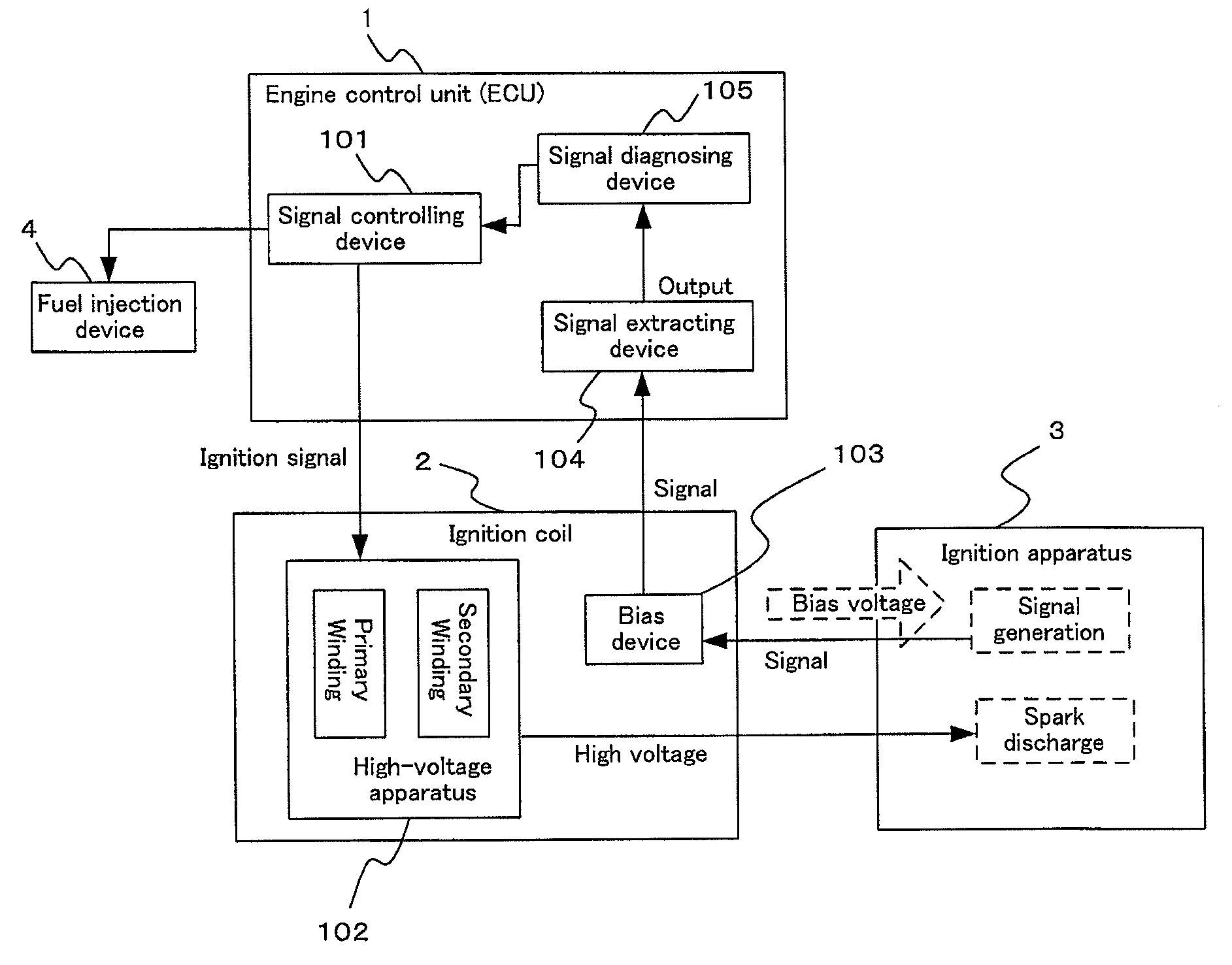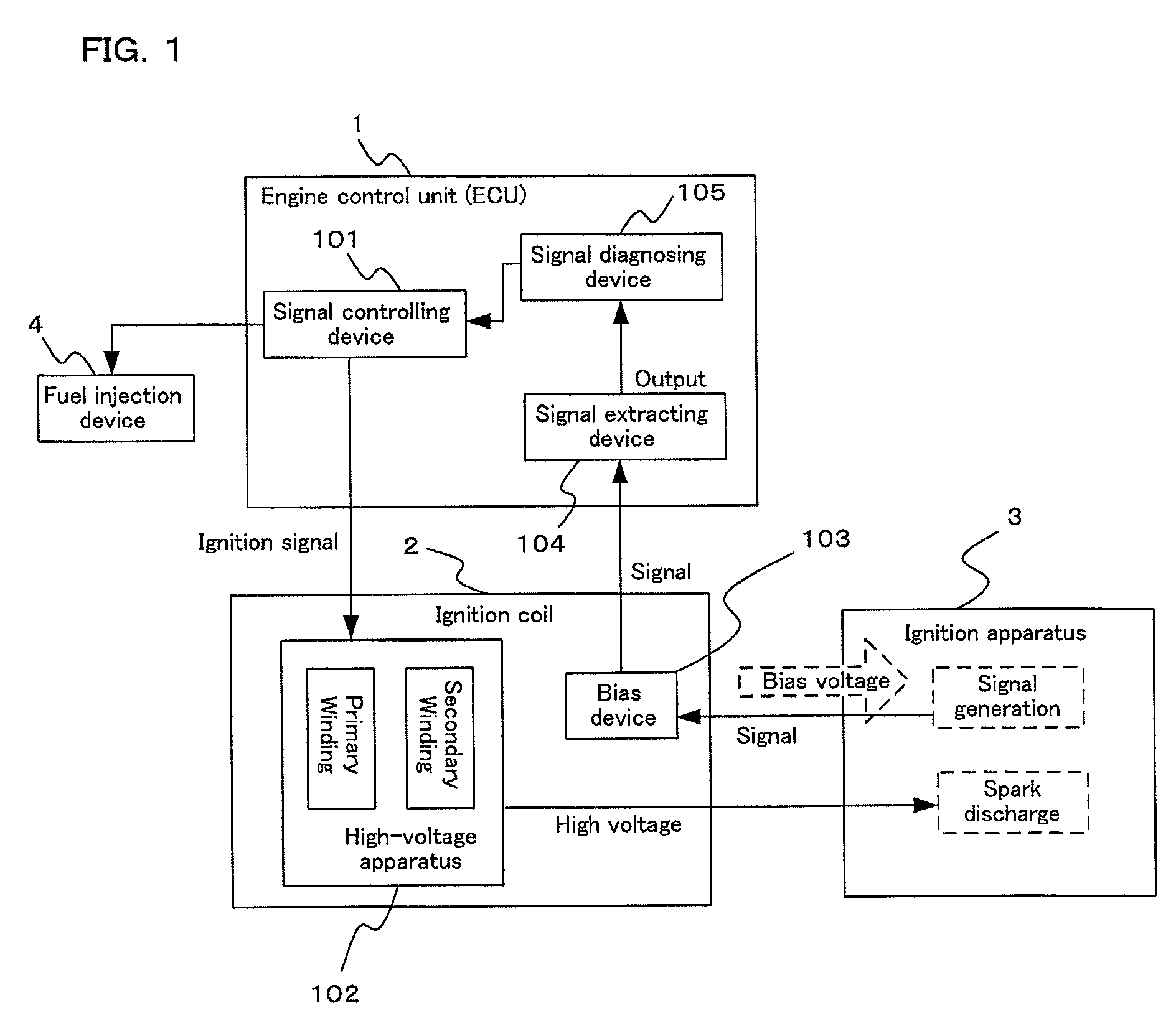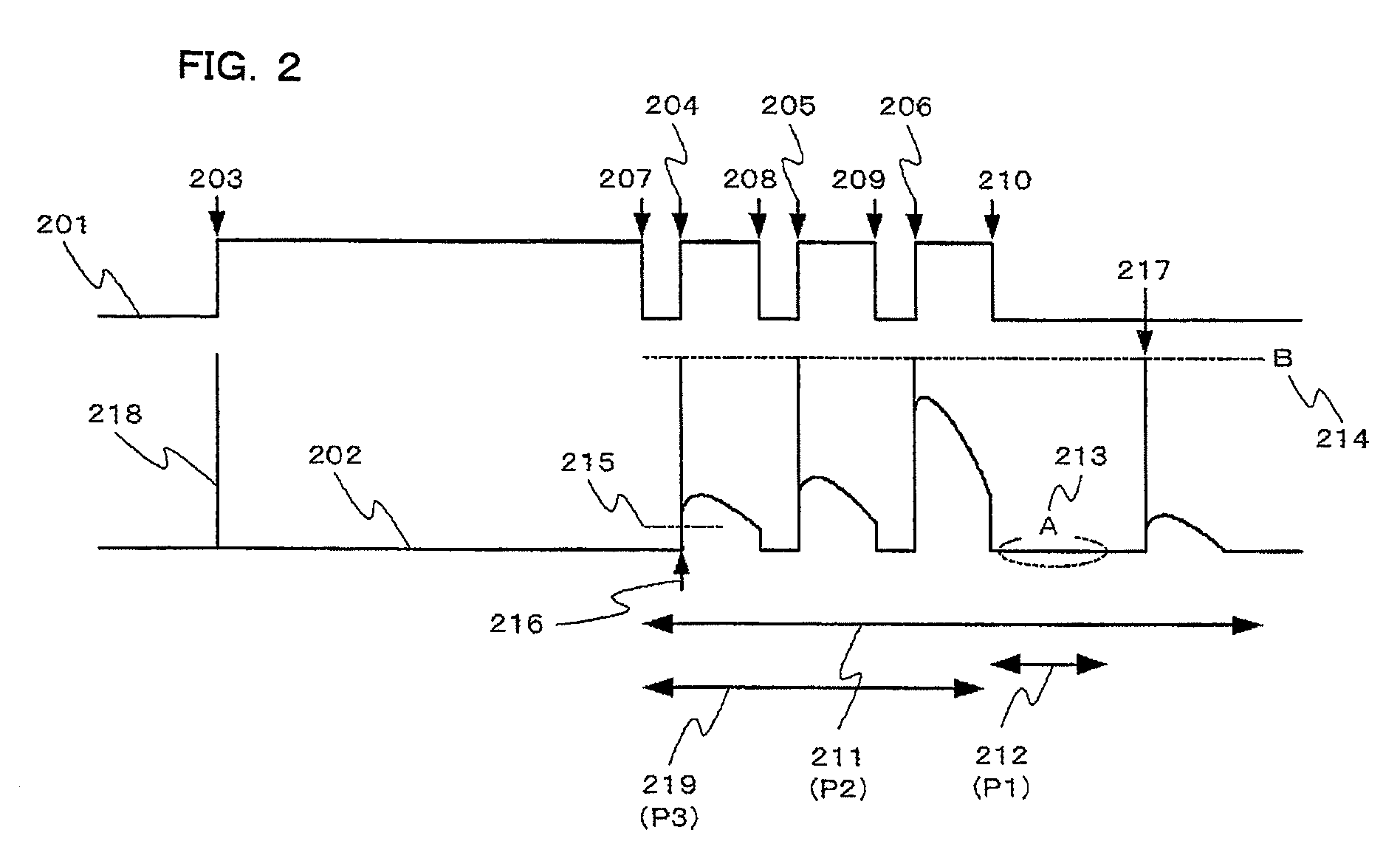Internal combustion engine ignition controlling apparatus having ignition diagnosing function
a technology of internal combustion engine and ignition control apparatus, which is applied in the direction of electrical control, process and machine control, instruments, etc., can solve the problems of difficult stabilization, practical limit, and unstable fuel concentration in the vicinity, and achieve the effect of achieving engine efficiency
- Summary
- Abstract
- Description
- Claims
- Application Information
AI Technical Summary
Benefits of technology
Problems solved by technology
Method used
Image
Examples
embodiment 1
[0025]Embodiment 1 of the present invention will now be explained with reference to the drawings.
[0026]FIG. 1 is a diagram that shows an overall configuration of an apparatus according to the present invention, and 1 represents a controlling apparatus that controls input and output of various kinds of signal, generally called an engine control unit (ECU). 2 represents an ignition coil, and 3 represents an ignition apparatus (a spark plug), an ignition controlling apparatus being configured by these three apparatuses. 4 represents a fuel injection device. A signal controlling device 101 inside the ECU 1 generates an ignition signal which is an instruction signal for operating the ignition coil 2. When the ignition signal is in a “High” state, the ignition coil 2 commences energy accumulation by an electric current (a primary current) flowing through a primary winding inside the ignition coil, and the ignition coil 2 generates a high voltage of approximately 30 kV, for example, in an ...
embodiment 2
[0045]A method in which misfire diagnosis results from a misfire detecting means are added to the ignition diagnosing method that is shown in Embodiment 1 will be explained based on FIG. 4. Because the flowchart that is shown in FIG. 4 is basically similar to the flowchart that is shown in FIG. 3, differences from FIG. 3 will be focused on and explained.
[0046]If it is determined at S306 in FIG. 4 that value A is greater than or equal to the comparison value P3 (N), then determine that there may be ignition failure, and proceed to S401. Here, if it is determined, using the determination of the misfire detecting means, that a misfire has occurred (Y), then the possibility of ignition failure is deemed to be higher, proceed to S307, increase the counter value of CNT1, and proceed to S315. On the other hand, if a misfire has not occurred at S401 (N), then a conflict has occurred between the ignition diagnosis and the misfire diagnosis, in other words, determine that it is very likely th...
embodiment 3
[0049]Embodiment 3 will be explained based on FIGS. 5 and 6. In Embodiment 1, for microcomputer computational load reduction inside the ECU 1, it was determined that multiple ignition is abnormal if a signal generation position C is less than a comparison level P5, that is, retarded, but multiple ignition diagnosis can be performed more accurately using parameters such as an impulse signal generation count such as 501 in FIG. 5 that is generated together with the igniting operation inside the multiple ignition zone and an instruction count and timing of multiple ignition. A specific method will be explained.
[0050]With reference to the timing chart in FIG. 5, comparison levels 502 (P10) and 503 (P11) relative to the signal 202 and a multiple ignition diagnostic zone 504 are set, and an impulse signal count is counted (CNT3) in accordance with the flowchart in FIG. 6A.
[0051]First, at S551, check whether the diagnostic zone is present. The diagnostic zone (FIG. 5, 504, a fourth detecti...
PUM
 Login to View More
Login to View More Abstract
Description
Claims
Application Information
 Login to View More
Login to View More - R&D
- Intellectual Property
- Life Sciences
- Materials
- Tech Scout
- Unparalleled Data Quality
- Higher Quality Content
- 60% Fewer Hallucinations
Browse by: Latest US Patents, China's latest patents, Technical Efficacy Thesaurus, Application Domain, Technology Topic, Popular Technical Reports.
© 2025 PatSnap. All rights reserved.Legal|Privacy policy|Modern Slavery Act Transparency Statement|Sitemap|About US| Contact US: help@patsnap.com



